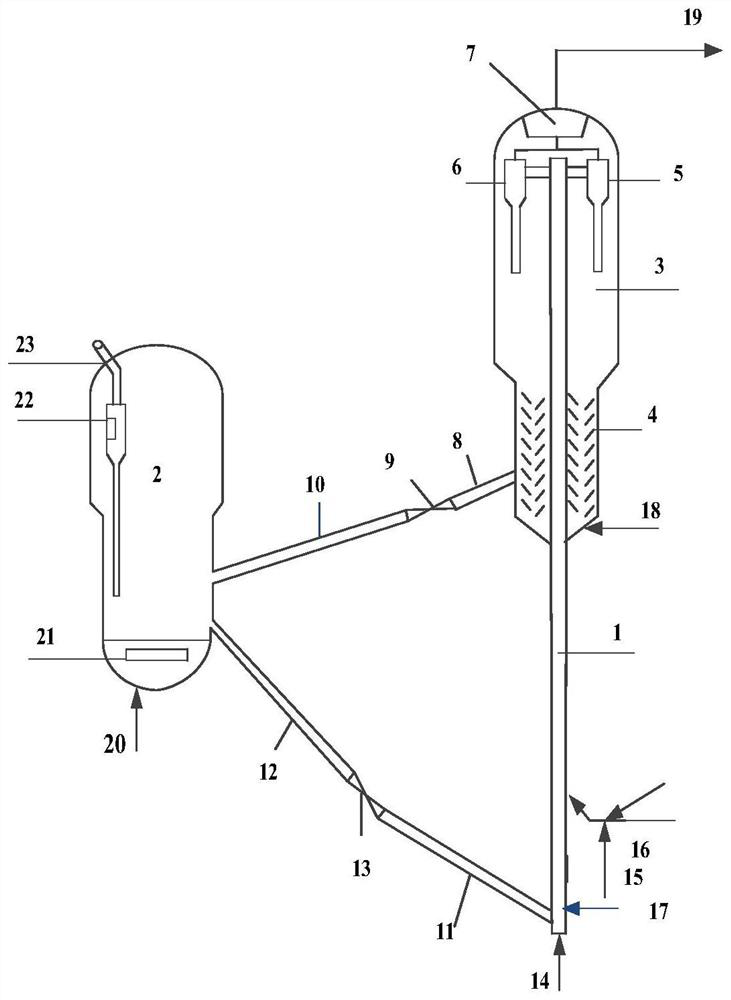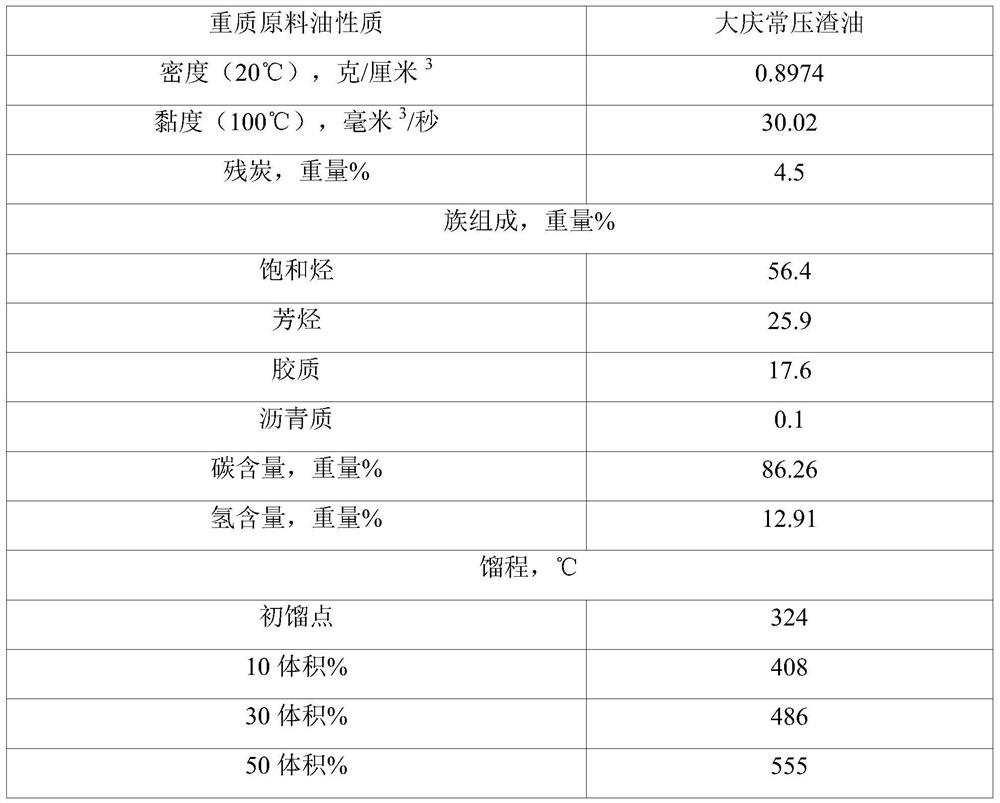Epoxypropane co-oxidation method co-production process waste liquidtreatment method
A technology of co-oxidation and propylene oxide is applied in the treatment field of co-oxidation co-production process waste liquid, which can solve the problems of uneconomical benefit of resource recycling, high cost, long separation and subsequent product refining process, etc. Improve economic and social benefits, increase productivity, and achieve the effect of resource recycling
- Summary
- Abstract
- Description
- Claims
- Application Information
AI Technical Summary
Problems solved by technology
Method used
Image
Examples
Embodiment 1
[0064] according to figure 1 process to test. Raw materials include: PO / MTBE waste liquid and heavy feedstock oil. The catalytic cracking reaction is carried out on a medium-sized device of an equal diameter riser reactor. The preheated PO / MTBE waste liquid (preheated to 390°C) enters the lower part of the riser reactor, and the preheated heavy feed oil (preheated to 230°C) enters the feed port above the PO / MTBE waste liquid feed port Enter the lower part of the riser reactor for catalytic cracking reaction. The pre-lift medium enters from the bottom of the riser reactor through the pre-lift medium pipeline, and the regenerated catalyst from the fourth regenerated catalyst inclined pipe line enters the bottom of the riser reactor after being adjusted by the second regeneration slide valve. The lower riser reactor moves upwards at an accelerated speed, and first reacts with the PO / MTBE waste liquid from the waste liquid feed line of the co-oxidation process of propylene oxid...
Embodiment 2
[0067] According to the method of embodiment 1, PO / MTBE waste liquid and heavy stock oil are sent into the riser reactor successively with catalytic cracking catalyst contact reaction, difference is, according to the flow direction of reaction material in the riser reactor, PO / MTBE The distance between the feed port of the waste liquid and the feed port of the heavy crude oil accounts for 10% of the height of the riser reactor. The operating conditions and product distribution are listed in Table 3.
Embodiment 3
[0069] According to the method of embodiment 1, PO / MTBE waste liquid and heavy feedstock oil are sent into the riser reactor successively with catalytic cracking catalyst contact reaction, difference is, the unit time of PO / MTBE waste liquid and heavy feedstock oil is carried out The material weight ratio is 0.3:1. The operating conditions and product distribution are listed in Table 3.
PUM
 Login to View More
Login to View More Abstract
Description
Claims
Application Information
 Login to View More
Login to View More - R&D
- Intellectual Property
- Life Sciences
- Materials
- Tech Scout
- Unparalleled Data Quality
- Higher Quality Content
- 60% Fewer Hallucinations
Browse by: Latest US Patents, China's latest patents, Technical Efficacy Thesaurus, Application Domain, Technology Topic, Popular Technical Reports.
© 2025 PatSnap. All rights reserved.Legal|Privacy policy|Modern Slavery Act Transparency Statement|Sitemap|About US| Contact US: help@patsnap.com



